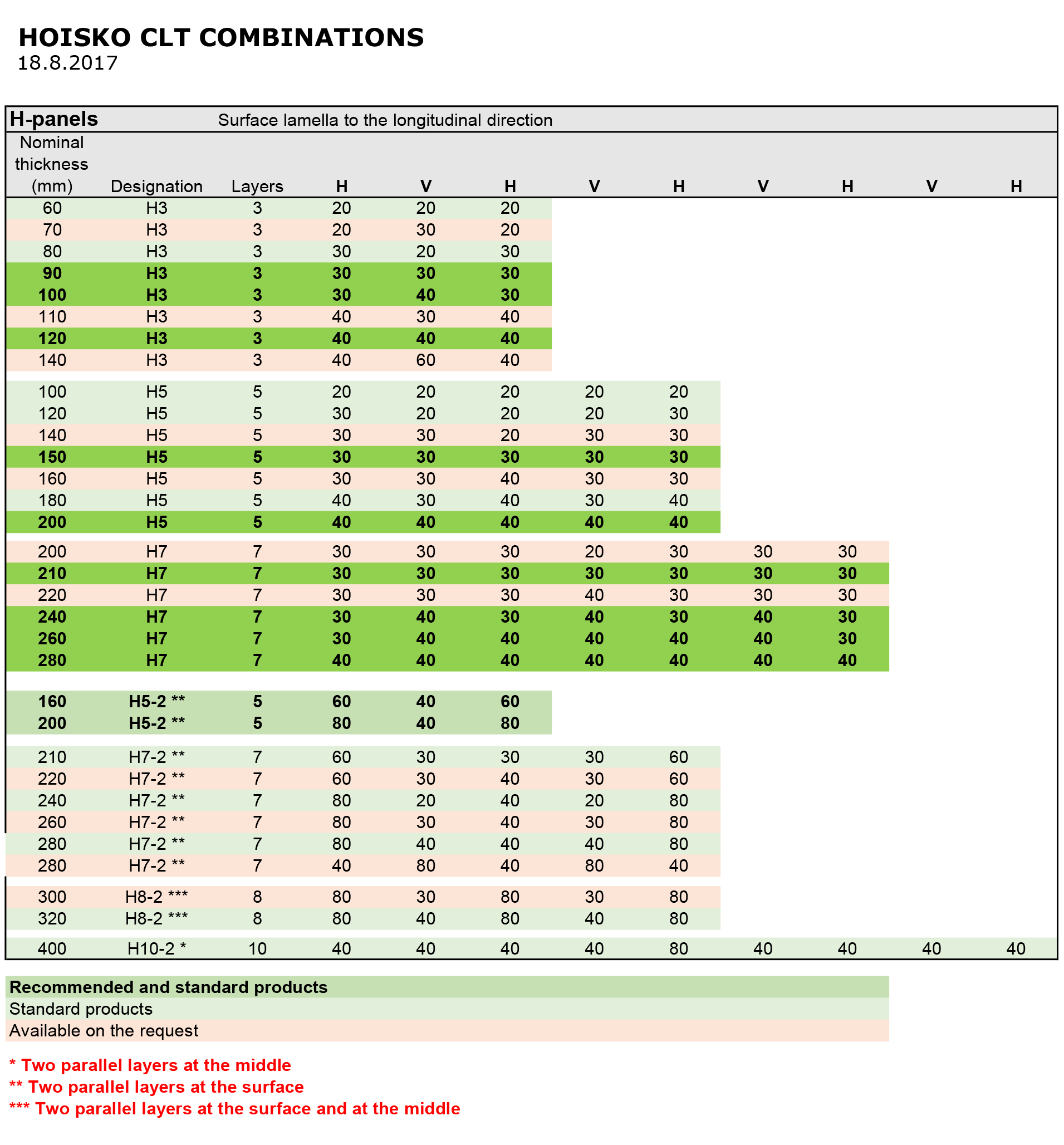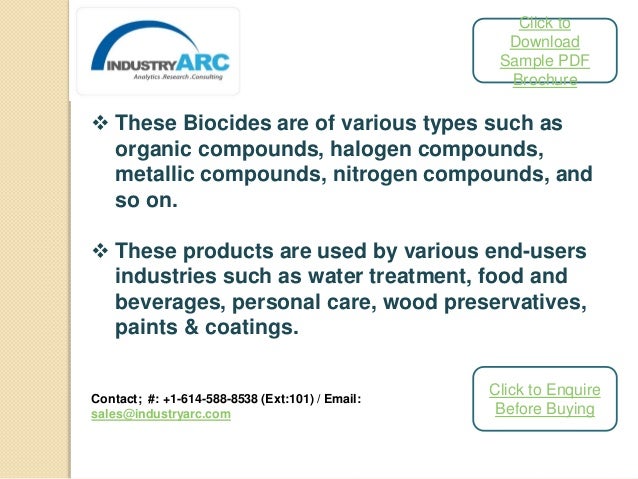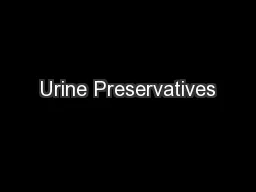Types of wood preservatives pdf
Methods of Applying Wood Preservatives Pressure Treatment. Pressure treatment – the wood is placed into an airtight steel cylinder and immersed in a preservative. Increasing pressure drives the chemical into the wood. There are full cell and empty cell processes.
Wood preservatives comprise an active ingredient and a carrier system. There are a great many types of active ingredient available, some highly toxic or harmful to the environment. Carrier systems are usually either water, water/solvent emulsions or light organic compounds such as white spirit. Water-borne systems can cause the wood to…
Film preservatives are used for preservation of most types of topcoat paints in outdoor applications by the control of microbial (mainly fungal) deterioration of the paint film. Biocides used in priming wood-care products, for which the main function is a protection of the wood against microbial deterioration are included in Product
groups of chemical wood preservatives that have been designated as “Restricted-Use”. This designation includes the requirement that only those who are Certified Applicators may purchase and/or use, or supervise the use of creosote, pentachlorophenol (penta), and inorganic arsenicals. Wood preservatives fall into three broad categories:
Seasoning of Timber or Drying of Wood Wood drying (also seasoning lumber or wood seasoning) reduces the moisture content of wood before its use. When the drying is done in a kiln, the product is known as kiln-dried timber or lumber, whereas air drying is the more traditional method. Seasoning is the process of removing the moisture content from wood to minimize structural problems when used in
A. Preservatives •There are basically three types of preservatives used in foods: 1. antimicrobials, 2. antioxidants, 3. and antibrowning agents. • These additives are grouped under the category of preservatives in the INS system. • The antimicrobials, with E and INS numbers ranging from 200 to 290, are used to check or prevent the growth of
Types of Wood Preservatives concern as in wood treated with other waterborne preservatives that contain copper but do not contain chromium. CCA contains inorganic arsenic and is classified as an RUP by the EPA. Producers of treated wood, in cooperation …
Five Most Common Types of Preservatives Used in Cosmetics Cosmetic and beauty products are made up of ingredients that are biodegradable, and this means that microbes can easily break them down. This causes a product to become unpleasant and unsafe for consumers with an added antimicrobial.
Before applying preservatives it is important to carry out all sawing, planing, cutting, boring, drilling and sanding before treatment. •It is important that no untreated wood will be exposed. Where this is not practical, the exposed surfaces, especially end grain, should be dealt with as a separate operation.
Finally, there are new wood preservative technologies such as wood acetylation and heat treatments. A notable trend in the development of modern wood preservatives points in the direction of more environmentally friendly compounds that require simpler handling by consumers, making it easier for the average person to put such products to use.
• Know the type of wood when specifying the amount of . penetration . ̶Some wood accepts preservatives more readily • All wood species treated with CA -C chemistries must have an end cut solution applied during construction . Primary Requirements of any Preservative Treatment
Define wood preservative. wood preservative synonyms, wood preservative pronunciation, wood preservative translation, English dictionary definition of wood preservative. n a coating applied to timber as a protection against decay, insects, weather, etc
Full text of “Properties of a good wood preservative” Very few materials have been found to have value as wood preservatives. Most of them lack one or more of the requirements of a good preserva- tive. To preserve wood against decay a substance must first of all be poison- ous to wood-destroying fungi. Decay in wood is not due to direct chem- ical action or action of the elements but is
Chromated copper arsenate (CCA) wood preservatives contain chromium, copper and arsenic. Pressure-treated wood containing CCA is no longer used in most residential settings. The chemicals in CCA-treated wood have been shown to leach into the surrounding environment and can transfer to the skin when people touch the wood. CCA residues on the
erthepreservativeismoved.Theformeristhesimplertype andtheonebest suited to thetreatment of fence posts and other small timbers and where asmallamountof wood is tobetreated.
10.8.1.1 Preservatives – There are two general classes of wood preservatives: oils, such as creosote and petroleum solutions of pentachlorophenol; and waterborne salts that are applied as water solutions. The effectiveness of the preservatives varies greatly and can depend not only upon its composition, but also upon the quantity injected
Natural Food Preservation effinghamlibrary.org

At a glance Wood preservatives isurv
Types of Natural Food Preservation . Drying Reduces water concentration to prevent bacterial growth Drying is one of the most ancient food preservation techniques Drying is best for fruits and vegetables. It’s the fastest, easiest way to preserve food without any extra cost. Least space occupying. My favorite way to keep food Can be dehydrated, kept in the sun, or dried in the oven
Wood preservatives: Used for the preservation of wood, from and including the saw-mill stage, or wood products by the control of wood-destroying or wood-disfiguring organisms, including insects. This product type includes both preventive and curative products. PT 9: Fibre, leather, rubber and polymerised materials preservatives
A comparative study and evaluation of methodologies used for determining wood preservative penetration Conference Paper (PDF Available) · January 2011 with 69 Reads How we measure ‘reads’
Effects of wood preservatives on the surface roughness of wood depend on wood species and wood preservative types used due to anatomical differences between softwood and hardwood, wood preservatives’ chemical composition, and bonding mechanism with wood.
Development of Wood Preservatives. Wood decay has plagued humans since they began building with wood thousands of years ago. When trees with natural durability were available, they were commonly used. But the scarcity of durable timbers in some areas of the world, coupled with a need to make our wood products and structures last longer, led us

Applicants have discovered that amine oxides enhance the uniform distribution and penetration of wood preservatives into wood substrates, minimize leaching of the wood preservatives, and improve the weatherability of the wood substrate. The present invention provides a method for enhancing the uniform distribution and penetration of at least one wood preservative into a wood substrate by
Tebuconazole Product-type 8 29 November 2007 4 1. STATEMENT OF SUBJECT MATTER AND PURPOSE 1.1. Procedure followed This assessment report has been established as a result of the evaluation of tebuconazole as product-type 8 (Wood Preservatives), carried out …
Etofenprox Product-type 8 13 September 2007 4 1. STATEMENT OF SUBJECT MATTER AND PURPOSE 1.1. Procedure followed This assessment report has been established as a result of the evaluation of etofenprox as product-type 8 (wood preservatives), carried out …
Watch a Video on Presentation on Wood Preservation . Decay of Wood & Timber: The principal destroyers of wood are decay, caused by fungus, and attack by a number of animal organisms of which termites, carpenter ants, grubs of a wide variety of beetles, teredo, and limnoria are the principal offenders.
The depth of penetration of preservative in wood fibers should be minimum 6mm to 25mm. Different Types of Preservatives for Timber. Coal tar; ASCU; Chemical slats; Oil paints; Solignum paints; Creosote oil; Coal Tar for Preservation of Timber. Coal tar is heated and obtained liquid hot tar is applied on timber surface using brush. Coal tar contains unpleasant smell and does not allow paint on it.
Apart from structural wood preservation measures, there are a number of different preservatives and processes (also known as timber treatment, lumber treatment or pressure treatment) that can extend the life of wood, timber, wood structures or engineered wood.These generally increase the durability and resistance from being destroyed by insects or fungus
PROS AND CONS OF CURRENT AND FUTURE WOOD PRESERVATIVES M.H. Freeman, C.R. McIntyre and H. M. Barnes
WOOD PRESERVATIVES Properties, ideal preservative, types of preservatives, tar oils, water borne preservatives, organic solvents, fire retardants LOG PROTECTION/PRESERVATION Insects, fungi, log protection PREPARATION OF MATERIAL Factors affecting penetration and absorption, preparation of material, debarking, drying, other conditioning methods Page 1 2 13 21 32 40 44 . CHAPTER 8 …
Treated Wood and Wood Preservatives. Insects and mold can damage wood over time. Treating wood with pesticides can prevent wood from rotting as quickly. Treated wood is commonly used to build telephone poles, road signs, and marine pilings, as well as decks, play structures, and raised garden beds. Several wood preservatives are registered with

modernmethodsofwood preservation by albertphilliphueckel thesis forthe degreeofbachelorofscience in civilengineering collegeopengineer ino universityofillinois presentedjune,1908a d
Kinds of Wood Preservatives – authorSTREAM Presentation. Organic solvent type : Organic solvent type consist of copper and zinc salts of organic acids as Naphthenic acid, stearic acid, abietic acid and chlorinated phenols and benzenes like pentachlorophenol …
Effect of Wood Preservatives on Surface Properties of Coated Wood Article (PDF Available) in Advances in Materials Science and Engineering 2015 · July 2015 with 157 Reads How we measure ‘reads’
Preservative types The main forms of preservative are: Tar oil preservatives Water borne preservatives Solvent-based preservatives. 5. These preservatives can protect the timber in two ways. 1. They give physical protection by stopping fungi and insects getting at the wood. 2. They give chemical protection, making the wood poisonous to insects and fungi. Paint, for example, gives excellent physical protection.
Preservatives increasingly must meet international product and environmental standards, which along with the related test, analytical and quality control procedures, are described and referenced. Contributors from the wood preservation industry address a range of needs associated with cost, safety and performance efficacy, not neglecting a search for a better understanding of the finer
Wood Preservatives Wood preservatives must meet two broad criteria: (1) They must provide the desired wood protection in the intended end use, and (2) they must do so without presenting unrea-sonable risks to people or the environment. Because wood preservatives are considered to be a type of pesticide, the
Civil Engineering Materials SAB 2112SAB 2112 Introduction to Wood & Timber Dr Mohamad Syazli Fathi Department of Civil Engineering RAZAK School of Engineering & Advanced Technology UTM International Campus September 19, 2010 CONTENT SCHEDULE – 3rd Meeting 1. Timber classification, its structure and moisture content types of strength factors affecting thecontent, types of strength, factors
Types of preservative treatments for pressure treated wood. Pressure Treated wood is the application of a preservative formulat ion that is forced into the wood under pressure in a large cylinder. AWPA treatments are a safe and proven means to preserve and protect outdoor wood from …
This List of Permitted Preservatives sets out authorized food additives used to control micro-organisms or oxidation in food. It is incorporated by reference in the Marketing Authorization for Food Additives That May Be Used as Preservatives.
23/10/2019 · There is a wide variety of food preservatives used by cooks and food manufacturers to extend shelf life and improve storage of both cooked and raw foods. Many natural preservatives, like salt and sugar, are often used in preserving canned fruits, processed meats as well as various types of canned or jarred vegetables.
14 wood preservation SlideShare
Comprehensive testing has established that these preservatives are highly toxic to decay-causing fungi and insects and remain active in the wood indefinitely. CCA and creosote or PEC are also extremely effective against marine borers. Treatment preservatives do not protect pine against weathering. The application of suitable surface finishes is
Wood preservatives, such as phenols or copper arsenates, and insecticides against termites, used in crates, can contaminate food during shipping through direct contact or vapors. Wood shavings used for packing can also transfer these chemicals to foods, or to animals if the shavings are used for bedding. In addition, food stored in rooms with
Although artificial preservatives have some advantages like preservation of food and food products as well as limiting the food borne illness, they also have adverse effects on health such as deadly allergic reactions by sulfites, increased risk of cancer etc. Natural Preservatives. Not all preservatives …
Wood is preserved to protect it against fungal and insect attack and also against weathering. Three types of preservatives are used: water-based ones, solvent-based ones and creosote. The estimation of emissions can either be based on the quantity of preservatives consumed or …
01/09/2013 · Preservatives help to extend the wood service time by 25 to 50 years (Cooper, 2003; McBain et al., 1995). Among oilborne preservatives, creosote and pentachlorophenol (PCP) have been widely used to preserve wood products such as railroad ties, utility poles and timbers used for bridge or building construction.
The Natural Weathering Alternative Product InformatIon The recipe for LifeTime® Wood TreaTmenT has been handed down for over 60 years through three generations of woodworking craftsmen. This family-owned and operated business has made LifeTime® available commercially in Canada for more than 20 years, and it has become available across the world.
wood preservative, resists leaching because it is relatively insoluble in water. Little information is available on the in-service leaching rates of any of these wood preservatives, although CCA has been studied more extensively than the other preservatives. August 1996 Lebow, Stan. 1996. Leaching of wood preservative components and their
Wood preservatives comprise an active ingredient and a carrier system. There are a great many types of active ingredient available, some highly toxic or harmful to the environment more Carrier systems are usually either water, water/solvent emulsions or light organic compounds such as white spirit. Water-borne systems can cause
US6485790B2 Methods for enhancing penetration of wood
What Different Types of Wood Preservatives Are There?

Civil Engineering Materials WordPress.com
Types of Wood Preservatives fs.fed.us

WOOD PRESERVATION Nevada Department of Agriculture
Wood Preservatives an overview ScienceDirect Topics


Preservative Types itslimited.com.au
https://simple.wikipedia.org/wiki/Hardwood
Product-types ECHA
The Chemistry of Wood Preservation 1st Edition
11. List of Permitted Preservatives (Lists of Permitted

Tebuconazole Product-type PT 8 Wood Preservative
Effect of Wood Preservatives on Surface Properties of
Wood preservatives comprise an active ingredient and a carrier system. There are a great many types of active ingredient available, some highly toxic or harmful to the environment. Carrier systems are usually either water, water/solvent emulsions or light organic compounds such as white spirit. Water-borne systems can cause the wood to…
Chromated Copper Arsenate (CCA) Wood Preservatives
WOOD PRESERVATIVES Properties, ideal preservative, types of preservatives, tar oils, water borne preservatives, organic solvents, fire retardants LOG PROTECTION/PRESERVATION Insects, fungi, log protection PREPARATION OF MATERIAL Factors affecting penetration and absorption, preparation of material, debarking, drying, other conditioning methods Page 1 2 13 21 32 40 44 . CHAPTER 8 …
Decay & Preservation of Wood & Timber Wood Preservatives
Product-types ECHA
Five Most Common Types of Preservatives Used in Cosmetics Cosmetic and beauty products are made up of ingredients that are biodegradable, and this means that microbes can easily break them down. This causes a product to become unpleasant and unsafe for consumers with an added antimicrobial.
Treated Wood and Wood Preservatives
Preservative types The main forms of preservative are: Tar oil preservatives Water borne preservatives Solvent-based preservatives. 5. These preservatives can protect the timber in two ways. 1. They give physical protection by stopping fungi and insects getting at the wood. 2. They give chemical protection, making the wood poisonous to insects and fungi. Paint, for example, gives excellent physical protection.
11. List of Permitted Preservatives (Lists of Permitted
Treated Wood and Wood Preservatives
Wood is preserved to protect it against fungal and insect attack and also against weathering. Three types of preservatives are used: water-based ones, solvent-based ones and creosote. The estimation of emissions can either be based on the quantity of preservatives consumed or …
Types of Food Preservatives Online notes on microbiology
Wood preservation manual
(PDF) Effect of Wood Preservatives on Surface Properties
Treated Wood and Wood Preservatives. Insects and mold can damage wood over time. Treating wood with pesticides can prevent wood from rotting as quickly. Treated wood is commonly used to build telephone poles, road signs, and marine pilings, as well as decks, play structures, and raised garden beds. Several wood preservatives are registered with
Wood preservatives timber.lk
11. List of Permitted Preservatives (Lists of Permitted
The Natural Weathering Alternative
Civil Engineering Materials SAB 2112SAB 2112 Introduction to Wood & Timber Dr Mohamad Syazli Fathi Department of Civil Engineering RAZAK School of Engineering & Advanced Technology UTM International Campus September 19, 2010 CONTENT SCHEDULE – 3rd Meeting 1. Timber classification, its structure and moisture content types of strength factors affecting thecontent, types of strength, factors
Types of Wood Preservatives fs.fed.us
At a glance Wood preservatives isurv